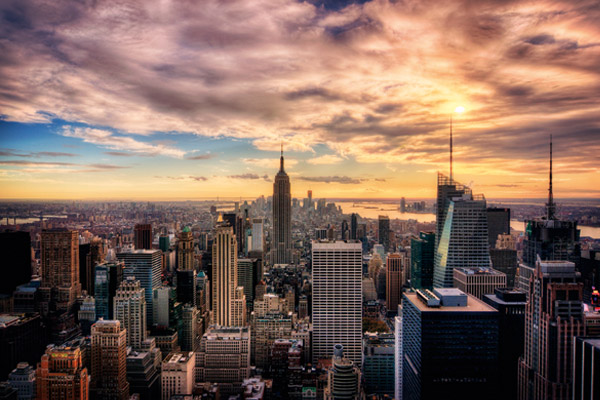The city might have been invented by the Ancient Mesopotamians, but for most of human history urban living has been a decidedly minority pursuit. For 1,000 years before 1800, only 3 per cent of the world’s people were city dwellers. Today that proportion has risen to more than one half and by 2050 it will touch three quarters.
With these striking statistics P.D. Smith begins his journey into the urban age (which, it turns out, is all of history and a chunk of prehistory besides). Darting between continents and across millennia, he sets out to show how little the experience of urban living, working and playing ever really changes. Cultures and civilisations vary across time and place, he says, but the city is universal. To understand it is to understand much about humanity itself.
The book that results is a rich kaleidoscope celebrating urban life in all its aspects. It is neither a sustained narrative nor a polemic, but takes its cue from the episodic construction of city guidebooks. This conceit works well, helped along by copious and colourful illustrations. No city, let alone the universal city, can be seen entire. Smith’s approach is to take the reader on a series of tours, which are consistently well-written and researched — and impressively eclectic — that reveal his subject matter in myriad small glimpses. He invites his readers to dip in and out of the text rather than necessarily to plough through. In its optimistic vision of 21st-century urbanism, his book echoes and complements another recent dissection of the city, Edward Glaeser’s Triumph of the City. Both trumpet the city as mankind’s greatest historical invention and, more importantly, the key to future human happiness in an era of rapid world population growth. Their reasons, however, diverge. For Glaeser, they lie in hard economic causes — the paradox that advances in communications technology only increase the value of face-to-face contact. His cities are defined first and foremost by their populations which, in their proximity, are more than the sum of the millions of people who represent their individual parts.
Smith’s city is instead defined by its experiences — arriving, getting around, shopping and sleeping — shaped by the interaction between people and the built environment. This of course makes for an alluring literary destination, but also one that is a little too comfortable. The vibrancy of the world’s greatest conurbations (he returns again and again to London and New York in particular) leaps out from his pages. Less room is given to the unseemly side of city life: its poverty and deprivation, its smoke and banal sprawl. In many of the mega-cities of the developing world, of course — in their way the most significant cities of the 21st century — it is blights such as these which dominate the urban experience.
They are also the most pressing reminders that, in truth, all cities are far from alike, not least because they fail as dramatically as they succeed. In eschewing a historical approach, Smith skims over such topical chapters as the rise and fall of the industrial city. When ancient city-states outlived their time they simply melted away. In the modern world of democratic nation-states, tidal shifts in the economic circumstances that first spawned a city pose acute political dilemmas. Glaeser prescribes the harsh medicine of managed decline for such temples to the industrial age as Detroit and others have done, and the same for the Victorian industrial towns of the north. Smith celebrates the places that have reinvented themselves again and again. History seems to show that these are more the exception than the rule.
Yet this book’s tendency towards rose-tinting may hardly matter. It falls into a distinguished tradition of utopian writing about the city, capturing the essence not so much of the universal city as the ideal city. Although it draws frequent parallels between ancient and modern, one senses that the cities most closely approaching Smith’s ideal are the wealthy metropolises of the 19th and 20th centuries; at once imposing and human in scale, these are places of leisure and enjoyment as well as finance and trade, and crammed with public spaces that set the stage for the theatre of life.
It would be nice to think that the three quarters of the planet’s population who will be urbanites by the middle of this century will live in such places as these, but that hope is almost certainly sanguine. In the mean time, Smith’s book is at once a hugely enjoyable read and an inspiring vision to aim for.





Comments